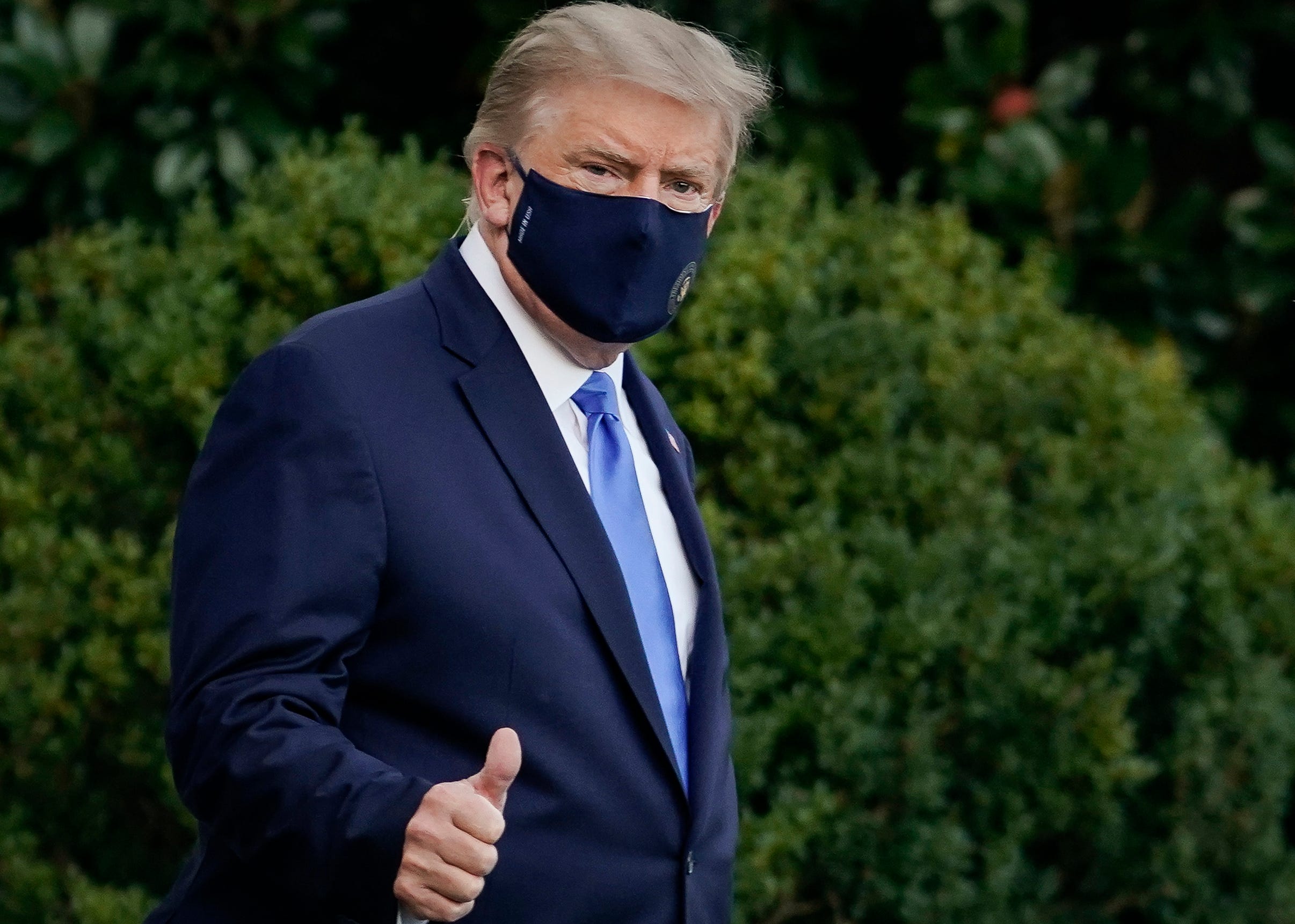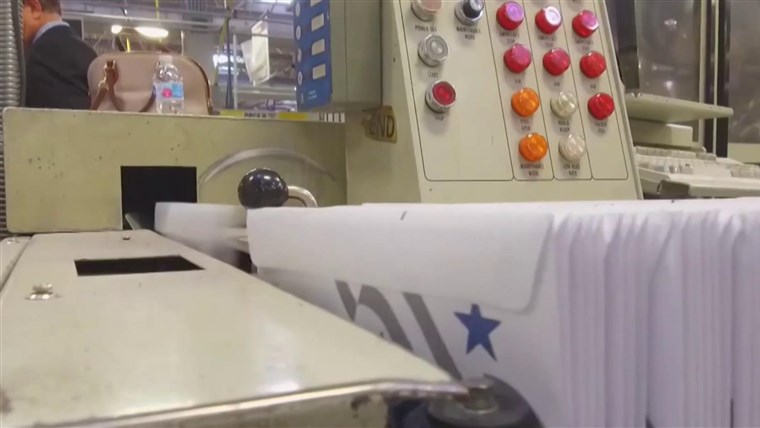WASHINGTON – A president in the hospital. Key advisers in quarantine. Lawmakers working remotely.
COVID-19 has struck the highest levels of federal government.
So far, the wheels of government churn forward. But what if the virus keeps spreading throughout the top layers of the Trump administration and Congress on the eve of a national election, during a contentious fight to fill a Supreme Court seat that could help decide that election, and as the economy desperately awaits a lifeline from Congress?
Trump’s hospitalization has amplified deep questions about the federal government’s ability to function fully with its chief executive battling a potentially fatal virus at a crucial time for a politically fractured country.

That has been compounded by positive COVID-19 tests from his key advisers, his campaign manager and from three senators in the past two days – Republicans Ron Johnson of Wisconsin, Mike Lee of Utah and Thom Tillis of North Carolina – whose diagnoses have worried other lawmakers they may be next.
Nils Gilman, vice president of programs at the Berggruen Institute, a Los Angeles-based think tank, doesn’t fret that the day-to-day activities of the federal government will be compromised. Social Security checks will keep getting mailed. National parks will still accept visitors. The nation’s borders will continue being patrolled.
“Whether the political operations of the government can continue?” he said. “That seems to be very much at risk.”
The country has found a way to surmount political crises before.
The death of President Franklin Delano Roosevelt in 1945 with World War II still raging. President John F. Kennedy’s assassination in 1963 that shocked and devastated the country. President Reagan nearly dying from a gunshot wound shortly after his inauguration in 1981.
Woodrow Wilson caught a bad case of the Spanish flu during the pandemic a century ago, six months before suffering a stroke that left him partially paralyzed and blind and effectively incapacitated during the last year of his presidency.

But this feels different given that’s in the middle of a pandemic that has killed more than 209,000 Americans, the most by far of any country. And that it’s also infecting congressional leaders. And that the Supreme Court only has eight members, only a month from an election it may be asked to settle.
“If there’s a crisis of some sort, what’s going to happen? Are we going to talk about 25th Amendment stuff?” asked Gilman, referring to the provision that allows for the vice president to take over from a president who’s declared incapacitated. “Are there going to adversaries globally who might try something while Trump is in the hospital?”
EX-DEFENSE SECRETARY:Trump’s hospitalization seriously impacts national security
Trump’s physician, Sean Conley, tried to tamp down panic, declaring during a news conference Saturday the president was “doing very well” at Walter Reed Medical Center in Bethesda, Maryland. That contrasted with an initial diagnosis that was “very concerning.” The president’s vitals over the day before were “very concerning” and the next 48 hours will be critical for his care, White House chief of staff Mark Meadows told the Associated Press on Saturday.
Trump himself has remained uncharacteristically out of view since announcing the diagnosis, and White House officials sought to convey a sense of business-as-usual throughout the day Friday. On Saturday, officials announced that he had signed two resolutions appointing citizen regents to the board of the Smithsonian Institution.
So far, Vice President Mike Pence and key Cabinet officials, such as Attorney General William Barr, have tested negative for the virus despite attending a Sept. 27 Rose Garden ceremony introducing Trump’s pick to replace Ruth Bader Ginsburg on the Supreme Court: Amy Coney Barrett.

More:President Trump has COVID-19: A timeline of his travels leading up to a positive coronavirus test
Most of the more than 100 who attended sat shoulder-to-shoulder and did not wear masks. At least six attendees, including Trump, Lee and Tillis, have since tested positive, prompting Senate Majority Leader Mitch McConnell, R-Ky., on Saturday to declare a two-week recess from floor action.
McConnell said the recess does not apply to the Judiciary Committee, which is holding hearings on Barrett’s nomination starting Oct. 12, although there are questions whether rules allow senators participating virtually because of COVID-19 to vote on her nomination in the committee.
TRUMP’S TRAVEL:A timeline of president’s travels leading up to positive coronavirus test
The decision to march ahead with hearings on a Supreme Court nominee was criticized by Democrats, who uniformly oppose her confirmation.
“If it’s too dangerous to have the Senate in session it is also too dangerous for committee hearings to continue,” according to a joint statement from Senate Minority Leader Chuck Schumer of New York and Dianne Feinstein of California, the top Democrat on the Judiciary Committee.
Republicans hold a 53-47 advantage in the Senate, and GOP Sens. Lisa Murkowski of Alaska and Susan Collins of Maine have said they oppose a vote to replace Ginsburg before the election. Any further erosion erosion of Republican support could complicate efforts to seat the high court’s ninth member in time to rule on possible cases involving the elections of the president or members of Congress.
More than 300 lawsuits have been filed in nearly every state, thanks largely to problems associated with COVID-19 and the expansion of mail-in voting. Republicans, including President Donald Trump’s reelection campaign, demand limits on voting by mail while Democrats push for further opportunities.

The nation’s ever-rising political polarization make it even more likely that local, state and federal elections will wind up in court, not only in the weeks leading up to Election Day but in the days and weeks thereafter.
More:Supreme Court is shorthanded but could play role in election
If those cases do emerge 4-4, the court can reschedule the case for the following term, hoping for a ninth justice. That happened in July 2020, when Associate Justice Neil Gorsuch cast the deciding vote that put the eastern half of Oklahoma under Native American criminal jurisdiction.
And sometimes the court simply ties up, rendering its ruling almost meaningless. The tie vote leaves the most recent decision by a lower court intact. There is no new, national precedent created by the nation’s highest court.
Trump has widely questioned the legitimacy of mail-in ballots that many states are using during the pandemic. He has made the seating of Barrett an imperative in case the justices have to rule on the results of his own presidential election.
“I think this will end up in the Supreme Court, and I think it’s very important that we have nine justices,” Trump told reporters last month.
All of which is fueling GOP efforts in the Senate to move ahead with Barrett’s confirmation, regardless of the health risks that have permeated government.
“There’s intense political pressure from Republicans to get this done,” Gilman said. “But is this the hill you really want to die on?”
Contributing: John Fritze, Rich Wolf, Doug Stanglin and David Jackson


